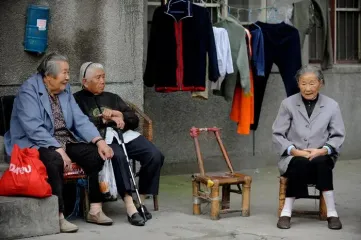China is experiencing an unprecedented demographic crisis — what will it lead to

China is “covered” by a demographic crisis of unprecedented scale
The danger comes from within: the country is experiencing an unprecedented population decline in scale and speed. This will lead to long-term consequences that will be felt not only in China itself, but around the world for decades, writes
Slowing economic growth could threaten Beijing's ambitions to become a global superpower comparable to the United States, while acute labor shortages could disrupt supply chains for goods ranging from Barbie dolls and shoes to mobile phones and electric cars.
In 1990, the average Chinese age was 23.7 years old, and the average woman had 2.51 children—higher than the level needed to maintain a stable population (2.1). But by 2023, the demographic picture had changed dramatically: the median age had risen to 39.1 years old, and the fertility rate had fallen to one child per woman. In 2022, according to the census, China’s population peaked at 1.4 billion and is now declining.
The UN predicts that by 2050, China's population will shrink to 1.26 billion, while the age ratio will worsen: about 10% of residents will be younger than 15, and about 40% will be older than 60. By 2100, the population could shrink by more than half, to 633 million people, of whom only 7.8% will be younger than 15, and more than half (52%) will be older than 60.
The root of China's current problems lies in its birth control policy, which began in the 1970s. At that time, the government promoted the slogan "later, fewer, fewer," encouraging people to marry later, space their births further, and have fewer children. But in 1979, the government officially implemented the "one-child" rule. It was often enforced through forced sterilizations, abortions, and fines for "excess" births.
The measures proved too effective. The birth rate collapsed, and in 2015 the restrictions had to be relaxed: from 2016, it was allowed to have two children, from 2021 — three. However, the birth rate never recovered, and after a short-term surge in 2024, it even continued to decline — from 1.77 children per woman in 2016 to 1.12 in 2021.
The cost of raising a child in China is one reason for this decline. According to the Beijing-based YuWa Population Research Institute, it averages about $74,963 by the time a child graduates from university, and in megacities like Shanghai, it can reach $140,747.
The government is trying to stimulate the birth rate with cash payments, but without much success: in 2025, Beijing proposed a subsidy of about $500 per year per child in the first three years of life. Many on social media responded sarcastically: "If they paid ten times more, then we might think about it."

The birth rate is also directly affected by the decline in the number of marriages. In 2024, only 6.1 million marriages were registered in China — less than half of the 13.5 million in 2013. Young people of Generation Z increasingly see no point in marriage and parenthood.
But the government is actively promoting marriage: universities offer "love courses," companies offer bonuses to married employees, and local administrations pay bonuses for registering marriages. State media even criticizes TV shows that portray divorce as dismissal, journalists note.
In addition to declining birth rates, life expectancy is increasing. The number of elderly Chinese is increasing rapidly and is expected to double in 30 years. This is putting a huge strain on the tax-financed pension system. By 2100, there will be more people in China who are not employed in the economy than those who are employed.
China was the "factory of the world" for decades, but that era is coming to an end. A shrinking workforce makes it impossible to maintain previous levels of production.
The problem is exacerbated by the attitude of young people: the generation born between 1960 and 1980 willingly worked in factories, while today's young Chinese do not want that life.
Immigration could be a solution, but the Chinese government, which values cultural homogeneity, is in no hurry to "open up the country," the media writes. Instead, it is betting on automation and robots, but they are of little help in the service sector.
Even if businesses don't have a shortage of workers today, in 5-10 years, the problem will become apparent. If China's manufacturing capacity collapses too quickly, other countries simply won't have time to replace it, which will drive up prices for goods like iPhones and Nike, the report also says.
For China, the consequences will be much more serious — it will be a challenge for the economy, politics, society, culture, and national security.










